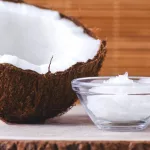Hey there! If you’ve ever wondered whether your Medicare plan will foot the bill for that trusty jar of psyllium you keep in the pantry, you’re not alone. The short answer is: most Medicare plans don’t cover over‑the‑counter (OTC) supplements like psyllium, but there are some handy work‑arounds. In the next few minutes we’ll walk through exactly how Medicare treats this fiber supplement, where you might find an exception, and the smartest ways to keep the cost low without sacrificing your health.
Quick Fact Sheet
- Does Medicare cover psyllium? Generally no, but Medicare Advantage (Part C) plans with OTC benefits often do.
- Which Medicare parts might pay? Part D (prescription drug) usually won’t, while Part C may, and Medigap never does.
- Typical price? Roughly $10‑$30 per month for a 160‑capsule bottle.
- Cheapest route? Look for generic brands, bulk packs, and use an OTC benefit card if you have one.
Got that? Great. Let’s dig deeper.
Medicare Parts Explained
Original Medicare (Parts A & B)
Parts A and B cover your hospital stays, doctor visits, and a handful of medical supplies. Unfortunately, they draw a hard line at anything you can buy off the shelf without a prescription. Psyllium, classified as a dietary supplement, falls squarely on the “no‑coverage” side of that line.
Medicare Part D (Prescription Drugs)
Part D is the drug‑coverage arm of Medicare, but it’s picky about what counts as a “drug.” The formularies (the list of covered meds) almost always exclude OTC products. The only way psyllium could sneak onto a Part D list is if a doctor writes a true prescription and the plan’s formulary decides to cover it—a rare, case‑by‑case situation.
Medicare Advantage (Part C) – The Real Opportunity
Here’s where the good news lives. Many Medicare Advantage plans bundle extra perks, and one of the most popular is an OTC benefit card. According to Healthline, 88 % of MA plans included OTC benefits in 2024. These cards work like a debit card, loading a set amount each month that you can spend on eligible products such as psyllium powder, capsules, or even gummies.
How does it actually work? You log into your member portal, locate the “OTC Benefits” section, and note the card number. Then you shop at a participating retailer—Walgreens, CVS, Walmart, you name it. The purchase amount is deducted from your monthly allowance, and you’ve essentially gotten the supplement for free (or for a small co‑pay).
Medigap (Supplement) Plans
Medigap plans are designed to plug the financial gaps left by Original Medicare—deductibles, copays, and coinsurance. They do not add any new services, which means they never turn an OTC supplement into a covered expense.
Budget Friendly Options
Verify Your MA Plan’s OTC Benefits
First thing’s first—make sure your Medicare Advantage plan actually offers an OTC card. Here’s a quick checklist:
- Log into your member portal (or call the member services line).
- Navigate to “Benefits” → “OTC Pharmacy Benefits.”
- Locate the card number and the monthly allowance amount.
- Confirm which retailers accept the card—most major drugstores do.
If you can’t find this info online, a quick call to your plan’s support line usually clears things up in under five minutes.
Ask Your Doctor for a Prescription
Even though psyllium is an OTC product, a physician can still write a prescription for it. When that happens, some Part D plans might treat it like any other prescription drug. It’s worth a short conversation with your doctor—just say, “I’ve heard some plans might cover psyllium if it’s prescribed; could we give that a try?” You may be surprised at how many providers are open to the suggestion.
Shop Smart – Price Comparison
| Brand | Form | Qty | Avg. Retail Price* (2025) | OTC Card Coverage |
|---|---|---|---|---|
| Metamucil (brand) | Powder | 160 capsules | $12‑$15 | Covered if retailer participates |
| Generic Psyllium Fiber | Powder | 160 capsules | $8‑$10 | Usually covered |
| Psyllium Wafers | Chewable | 24 count | $9‑$11 | Same as powder |
| Bulk Store Brand | Powder | 500 g | $6‑$8 | Covered under OTC |
*Prices are average retail figures gathered from GoodRx and SingleCare coupon listings.
Coupon & Discount Programs
Even with an OTC card, you can shave a few more dollars off with discount coupons. SingleCare frequently offers coupons that bring a 160‑capsule bottle down to $4‑$5. GoodRx does the same, especially if you’re buying at a pharmacy that participates in their price‑matching program. When you use a coupon, just present it at checkout (or enter the code online) before swiping your OTC card—no conflict, just extra savings.
Use an FSA or HSA
If you have a Flexible Spending Account (FSA) or Health Savings Account (HSA), you can claim the out‑of‑pocket cost of psyllium as a qualified medical expense. Keep your receipt, upload it to your account portal, and you’ll get a reimbursement—effectively turning a $12 purchase into a $0 expense after the tax‑advantaged refund.
Medical Food Possibility
What Is a “Medical Food”?
The FDA defines a medical food as a product formulated to meet the specific nutritional needs of a disease or condition, and it must be used under the supervision of a physician. When a product meets that definition, it can sometimes be covered by Medicare if it’s placed on a Part D formulary.
VSL #3 – A Real‑World Example
Take VSL #3, a probiotic blend for severe digestive disorders. Medicare.org explains that because it’s categorized as a prescription medical food, some Part D plans will cover it—if the plan’s formulary includes the product. This sets a precedent that, under the right circumstances, a fiber supplement could be treated similarly.
Could Psyllium Be a Medical Food?
At present, psyllium isn’t officially labeled a medical food. However, for patients with chronic constipation, IBS‑C, or cholesterol‑lowering needs, a doctor could argue that it serves a therapeutic nutritional role. If your physician writes a formal “medical‑food prescription,” you can bring that to your Part D plan and ask if they’ll add psyllium to the formulary. It’s a long shot, but it’s worth exploring if you’re already spending a lot on other treatments.
Take Action Now
Here’s a friendly, step‑by‑step road map you can follow today:
- Check your Medicare Advantage portal. Find out whether you have an OTC benefit and note the card number.
- Shop for generic psyllium. Use the price‑comparison table above to pick the best value.
- If you lack an OTC card, ask your doctor for a prescription. Mention the possibility of Part D coverage.
- Apply a SingleCare or GoodRx coupon. It’s free, quick, and can cut the price in half.
- Save your receipt for an FSA/HSA claim. That extra tax‑free refund can make a big difference.
And remember—if you’ve already got an OTC card, the whole process can be as simple as walking into the pharmacy, scanning the card, and walking out with your bundle of psyllium. No paperwork, no waiting, just a healthier gut and a lighter wallet.
Conclusion
Bottom line: Medicare rarely pays for psyllium outright, but many Medicare Advantage plans give you a smooth, low‑cost pathway through an OTC benefit card. If you’re on Original Medicare, a doctor’s prescription is your best shot at getting it covered under Part D. By checking your plan details, using coupons, and leveraging FSAs or HSAs, you can keep the price of this essential fiber supplement down to a few dollars a month.
Got questions or personal tricks for saving on psyllium? Drop a comment below or reach out to a Medicare‑savvy counselor—you’re not alone on this journey, and together we’ll keep those bowels moving and those bills low.


















Leave a Reply
You must be logged in to post a comment.